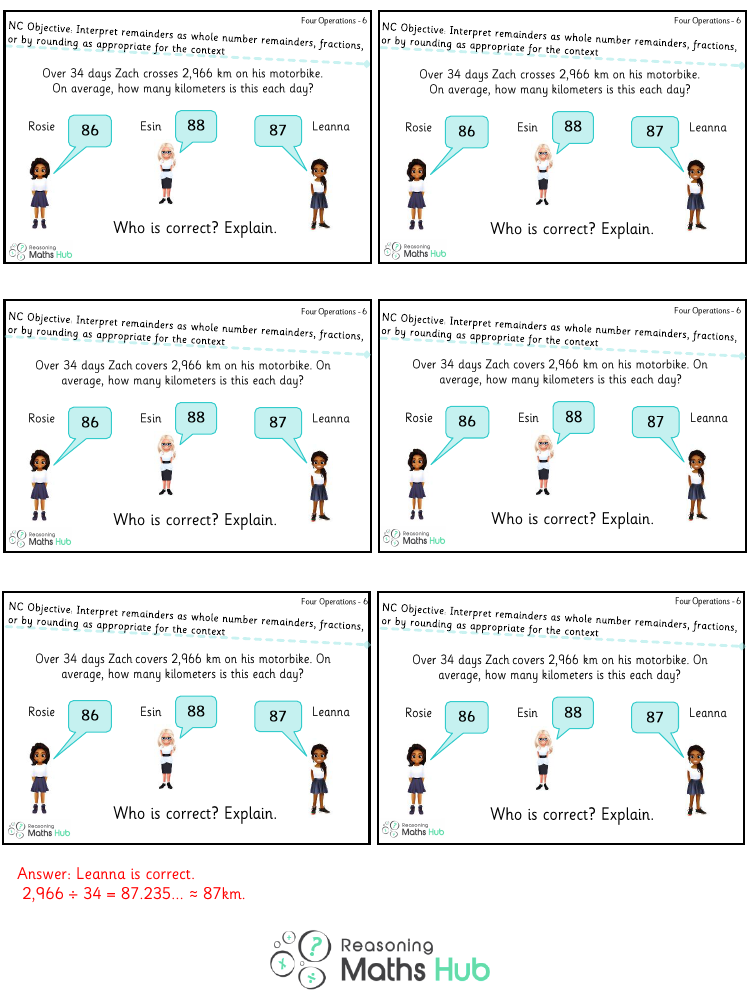Remainders as whole number remainders, fractions, or by rounding as appropriate for the context 4 - Reasoning

Maths Resource Description
The concept of remainders is an essential part of understanding division in mathematics. A remainder is what is left over after division when the numbers do not divide evenly. In educational settings, students are taught to interpret remainders in various ways according to the context of the problem. One way is to express the remainder as a whole number, which simply states the amount left after the division. For instance, if 10 is divided by 3, the quotient is 3 with a remainder of 1, often written as 3 R1.
Another approach is to express the remainder as a fraction. This method provides a more precise representation of the division result. Using the same example, the remainder of 1 can be written as 1/3, and the full division result is expressed as 3 1/3. This indicates that the 10 is divided into three whole parts with one-third left over. Additionally, remainders can be handled by rounding the quotient to the nearest whole number when appropriate. If the context calls for an estimation or if dealing with large numbers where the exact remainder is not critical, rounding can be a practical solution. For example, when dividing 10 by 3, instead of stating a remainder, the quotient can be rounded up to 4 to provide an approximate result.